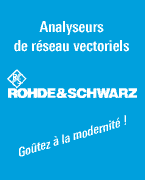|
|
|
|
|
|
|
|
|
|

|


Catégorie Télécom 02/03/2007 Gartner : 21 % de croissance des ventes mondiales de téléphones mobiles en 2006
Selon une étude Gartner, avec une livraison de 284,2 millions de terminaux mobiles au dernier trimestre, le marché mondial progresse de 21% par rapport à la même période en 2005.
Les ventes totales sur l'année 2006 aux utilisateurs ont représenté 990,8 millions d'unités - manquant que de peu le milliard d'unités - et portant la croissance d'une année sur l'autre à 21,3%.
Note : Ce tableau inclut les terminaux integrated digital enhanced network (iDEN) (iDEN). Il exclut les livraisons ODM aux OEM et les équipements boucle locale radio CDMA (CDMA WLL). Source: Gartner Dataquest (Mars 2007) Tableau 2 : Ventes terminaux mobiles mondiales aux utilisateurs en 2006 (milliers d'unités).
Note : Ce tableau inclut les terminaux integrated digital enhanced network (iDEN) (iDEN). Il exclut les livraisons ODM aux OEM et les équipements boucle locale radio CDMA (CDMA WLL). Source: Gartner Dataquest (Mars 2007) Pour plus d'informations, rendez-vous sur le site : Gartner Informations plus détailées en anglais: Motorola grew its market share in the fourth quarter of 2006, selling just over 61 million mobile phones to end users across the world and achieving a market share of 21.5 percent. The year started well for Motorola as it benefited from the success of Razr in most markets in 2005. Unfortunately, the momentum slowed in the second half of the year. Although the Razr is still doing well in many emerging markets and on prepaid tariffs, this has not been enough to sustain the early success. In 2006, sales to end users reached 209 million units, achieving a 21.1 percent market share. In the fourth quarter of 2006, the somewhat cold reception that greeted products such as the Krzr K1 and Motofone, coupled with the late shipping of some products, meant a considerable inventory build-up among distributors. As Motorola brings new products onto the market, it will be interesting to see how the company adds more features to its phones while continuing to be seen as on the cutting edge of design. Although traditionally not a strong quarter for Samsung, the fourth quarter saw sales of 32 million mobile phones and an 11.3 percent market share. Overall sales in 2006 were slightly more than 116 million units, a 12 percent increase from 2005. Samsung's Ultra family of products proved very successful, and Gartner expects the Ultra II series announced at the 3GSM World Congress to do well. While Samsung's focus remained on the high end of the market, it added more mid-tier and low-end products in the second half of the year to tackle emerging markets. In 2007, Gartner expects operators’ rollouts of technologies such as HSDPA and WiMax will help Samsung play a key role around the world. It remains to be seen, however, whether Samsung can rationalize its portfolio and cost structure, increasing not only its market share but also its profit margins. Sony Ericsson finished the year with a strong quarter, selling 25.7 million mobile phones across the world and reaching a market share of 9 percent, a 2.1 point increase over the same period in 2005. Overall sales for the year reached 73.6 million units and market share grew by 1.1 percentage point to 7.4 percent. Sony Ericsson was able to count on a rich portfolio of devices with music and imaging features, especially in the second half of the year. More recently, it has embraced ‘thin’ phones, and Gartner expects the slim W880 will help the company start 2007 on a positive note. LG saw the gap between itself and Sony Ericsson widen further in the last quarter of 2006 as it sold 17.8 million mobile phones and reached a market share of 6.3 percent. Although the Chocolate phone continued to sell relatively well, LG relied on it to drive sales. Its price has dropped quite considerably in many markets, which put more strain on already stretched margins. “The GSM Association has selected LG as the supplier for its “3G for all” initiative and though this might help LG's market share, we remain concerned about its affect on profit margins. LG might end up relying on its Prada phone to mitigate such an impact,” Ms Milanesi added. In the fourth quarter of 2006, BenQ Mobile dropped out of the top six players into ninth place. Parent company BenQ has stated that the company will focus away from Europe and limit itself to markets in Asia . “Given the very negative publicity and the highly competitive nature of mobile phone markets, this sounds sensible, but Gartner remains highly skeptical of what the future holds for BenQ Mobile,” Ms Milanesi added. Regional Analysis Sales in Asia/Pacific showed signs of slowing down in the fourth quarter, in line with a seasonal trend that does not favor the last quarter of the year in this region. Sales reached 87.7 million units, a 56 percent rise from fourth quarter of 2005. 2006 sales totaled 301 million units, up 47 percent from 2005 sales. Slim phones sold well throughout the region, while entry-level phones and ultra low-cost phones proved popular in India , China and the Philippines. “Among mature markets, Singapore showed strong demand for replacement phones, as well as sales to new subscribers, thanks to promotions by operators. In Korea , signs of recovery can be attributed to sales of handsets featuring TV tuners and the government starting to ease regulations on subsidies in August 2006,” Ms Liang said. In the Eastern Europe, Middle East and Africa region, mobile phone sales continued to grow in the fourth quarter of 2006. End users bought 52.4 million new mobile phones during the quarter. This was 13 percent higher than in the fourth quarter of 2005. In recent months, Samsung and LG increased their focus on emerging markets and tried to challenge the duopoly that Motorola and Nokia have established in the ultra-low-cost segment in particular. This has favored operators and consumers alike as more people were offered a wider choice of handsets at competitive prices. In 2006, just over 185 million mobile devices were sold in the region, an increase of 21 percent from 2005. In Japan , mobile terminal sales to end users in the fourth quarter of 2006 accounted for 13 million units, an increase of 10.9 percent from the fourth quarter of 2005. Mobile number portability was launched in Japan on 24 October 2006, and more than 800,000 users changed operators during the fourth quarter. “Mobile operators introduced 35 new models to cope with the tougher competition, and this made it easier for users who stayed with the same operator to buy a replacement phone,” said Nahoko Mitsuyama, principal analyst for mobile communications research at Gartner, based in Tokyo . Overall sales in 2006 reached 47.3 million units, which represented a modest 5 percent growth over 2005. This is not surprising for a market as mature as Japan , and is an indication of what Western Europe and North America can expect shortly. Mobile phone sales to end users in Latin America totaled nearly 34.5 million units. Year-over-year sales were up 13.5 percent. Full-year sales growth was up 16 percent, driving the market to 118 million units. Net additions in the entire region's larger markets have slowed substantially. Even Colombia , which yielded impressive growth during the first half of the year, slowed. “Penetration rates in previously high-growth countries have reached unexpected heights and promotions have become less aggressive as operators focus more on client retention and trying to increase users' spending,” said Tuong Nguyen, analyst for mobile terminals research at Gartner, based in Arlington , Virginia . Sales in North America remained very strong, with a record 44.8 million units sold to end users in the fourth quarter of 2006. Sales continue to be driven by the replacement cycle as consumers upgrade their devices to more fashionable slim ones or to phones with more features. “2006 was a very good year for sales of mobile phones in North America as consumers upgraded their phones at record level,” said Hugues De La Vergne, principal analyst for mobile terminals research at Gartner, based in Dallas , Texas . This resulted in annual sales of 164.2 million mobile phones in 2006. In line with seasonal trends, Western Europe saw a very strong end to the year, with sales in the fourth quarter of 2006 reaching 51.8 million phones. Consumers continued to keep up with fashion and features, and upgraded their mobile phones to newer ones. Christmas sales were not about a single product, as it was in 2005, when a pink Motorola Razr V3 was the phone to have for the holidays. Christmas in 2006 was more about choice, with popular products from Nokia, Samsung and Sony Ericsson alike. Sales in Western Europe reached 175 million mobile phones in 2006, a 7 percent increase from 2005. “We look forward to another exciting year in the mobile phone industry with more technologies becoming available and new players from other industries entering and adding some spice to an already very highly competitive market. We expect growth to slow down and overall mobile phone sales to be up to 1.2 billion worldwide,” Ms Milanesi concluded. More information is available in the Gartner report “Market Share: Mobile Devices, 4Q06 and 2006”. The report is available on Gartner’s Website at www.gartner.com. In addition, trends in mobile and wireless markets will be further discussed at Gartner Wireless and Mobile Summit 2007, 17-18 April in London . For further information please visit www.europe.gartner.com/wireless. 
|
 |
Rohde&Schwarz/FSL





|